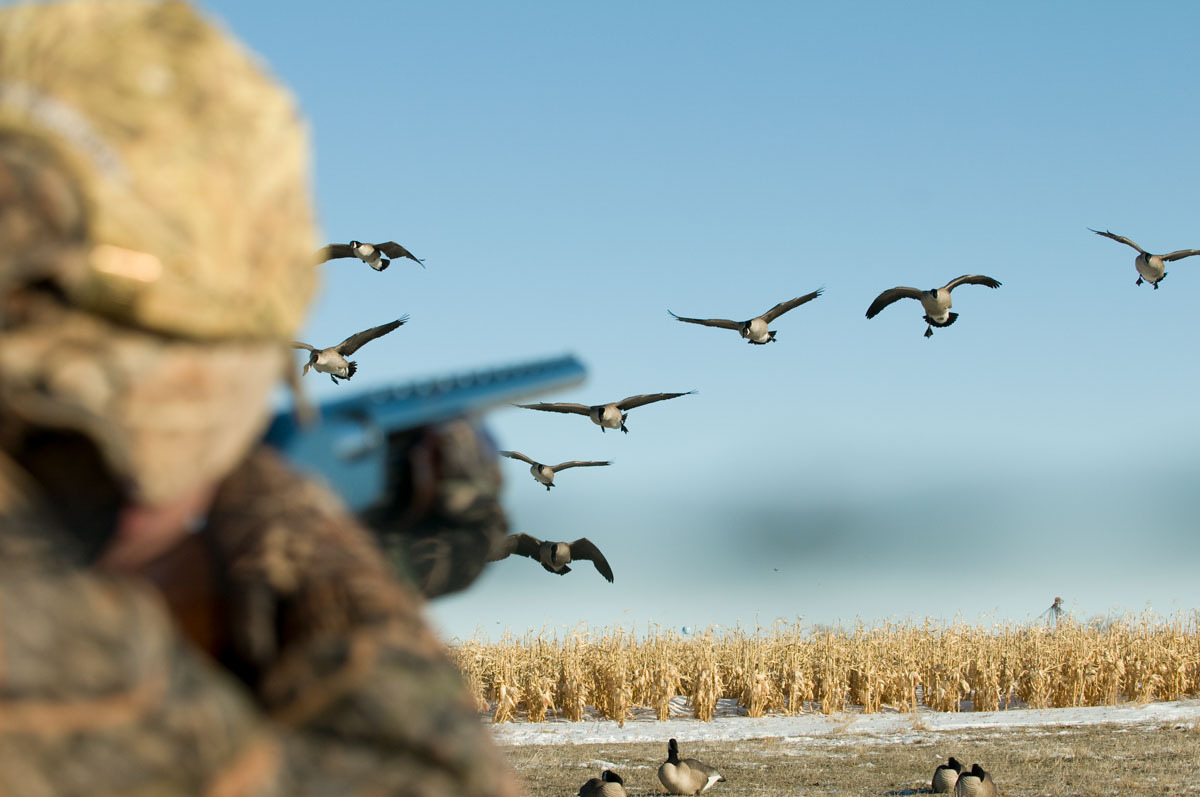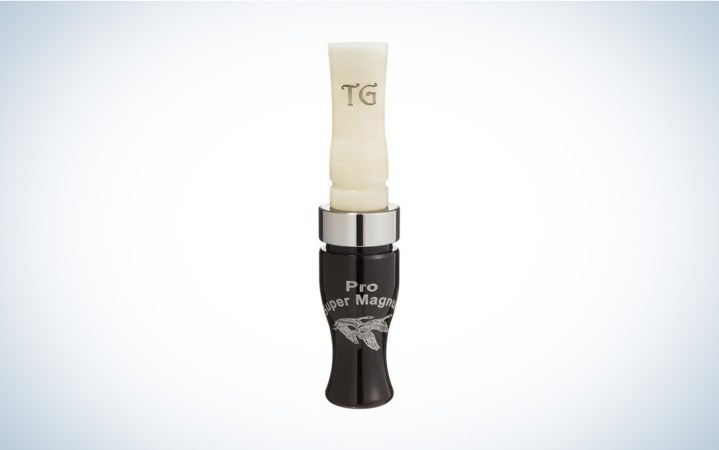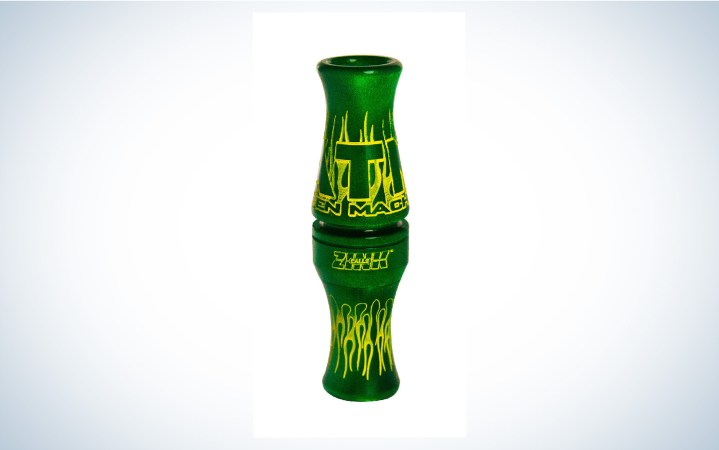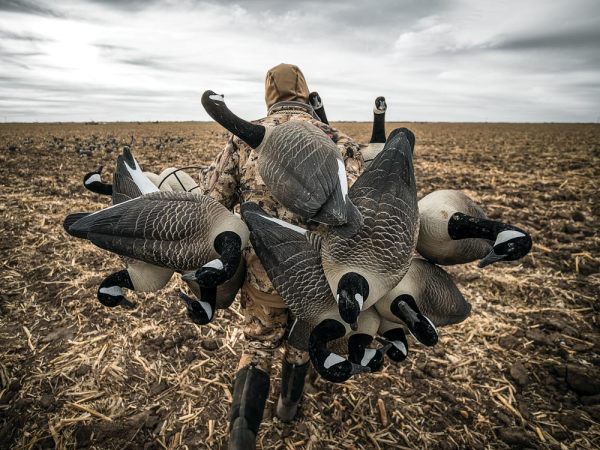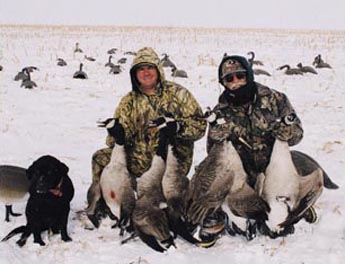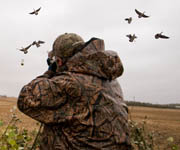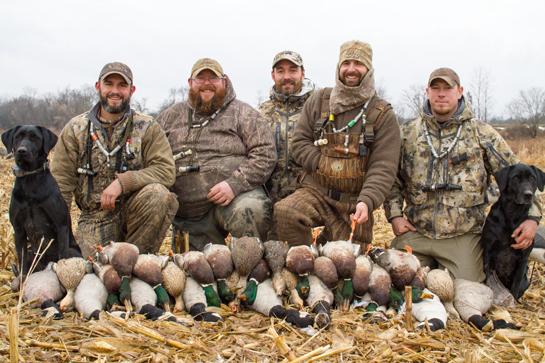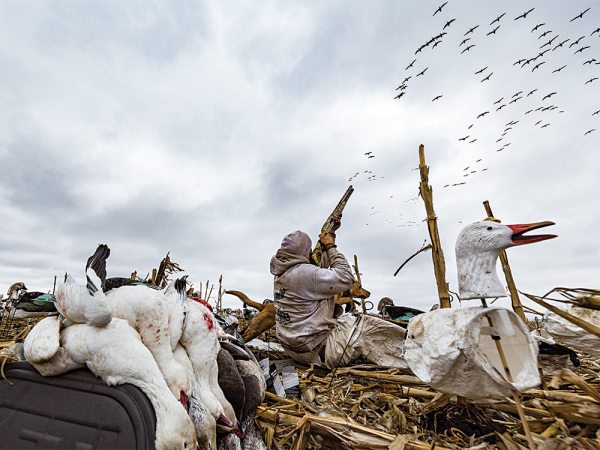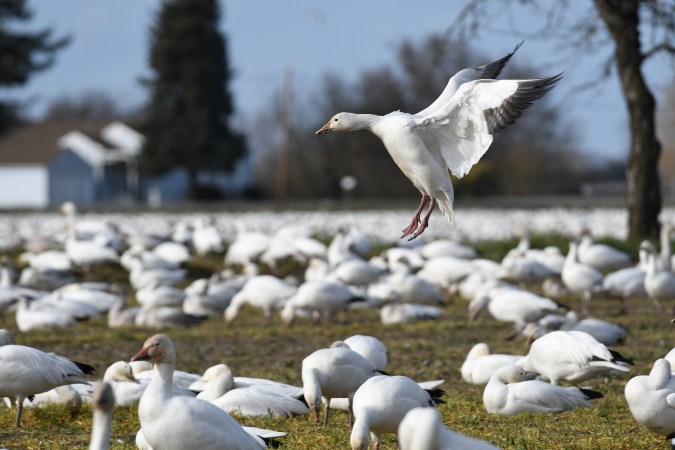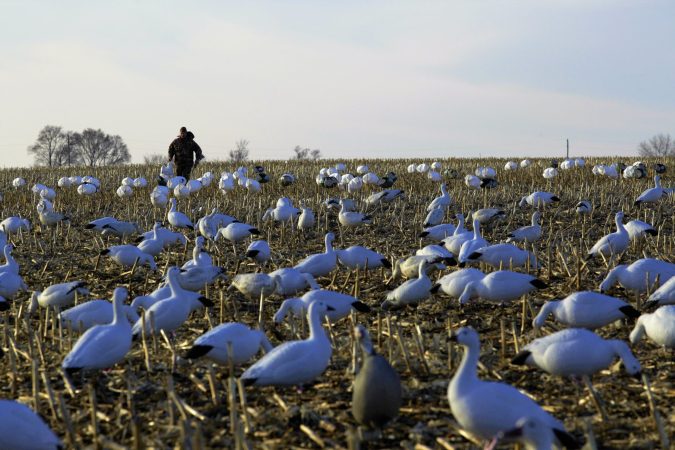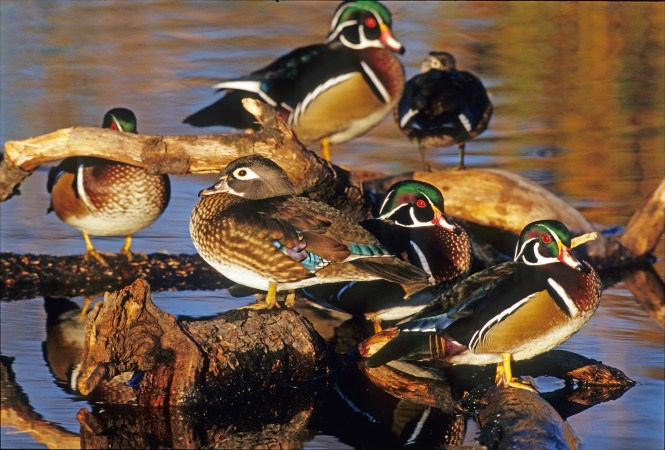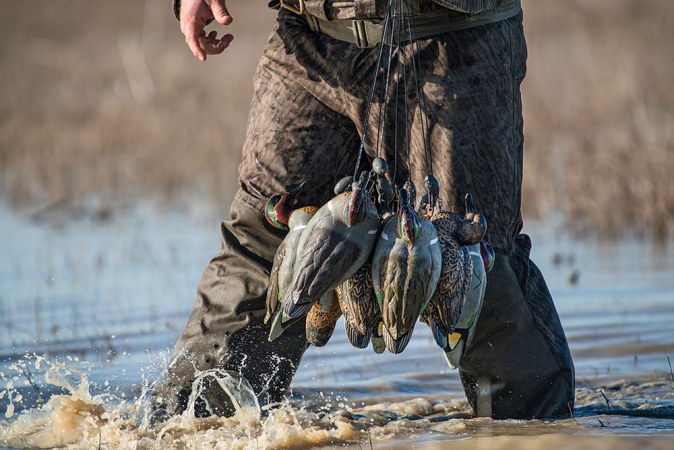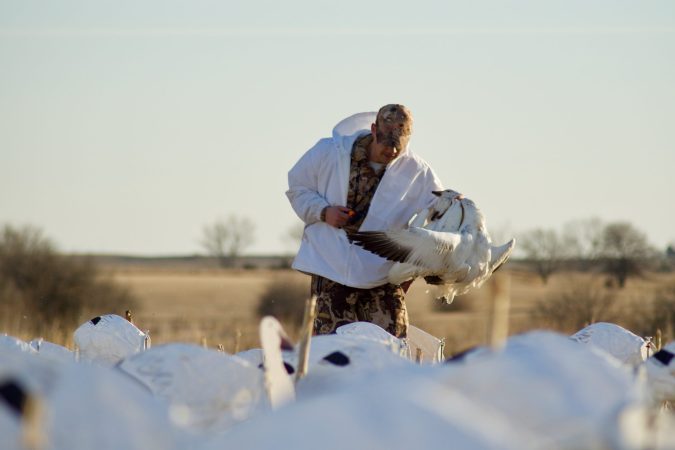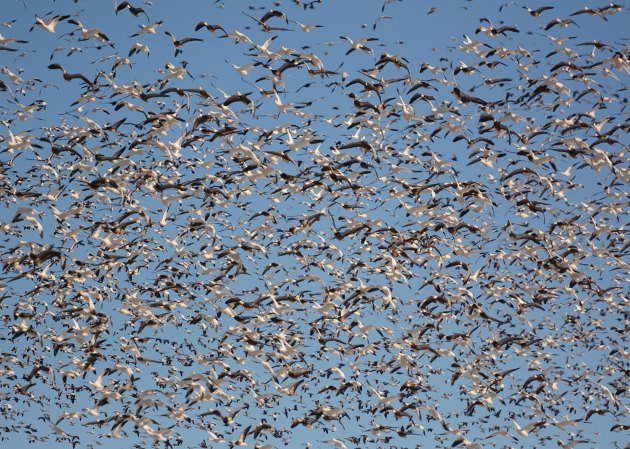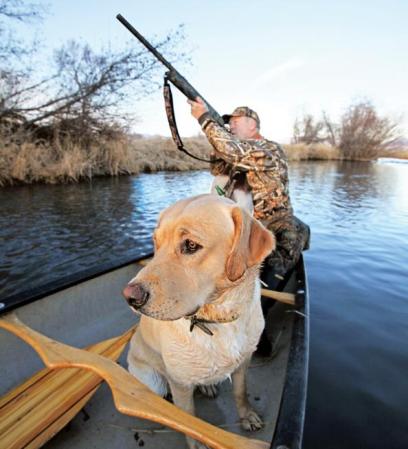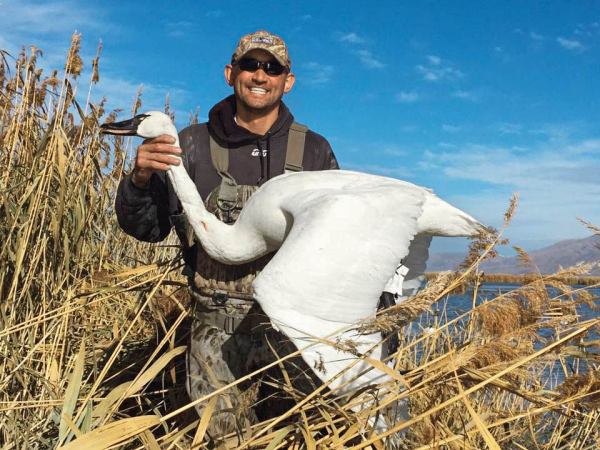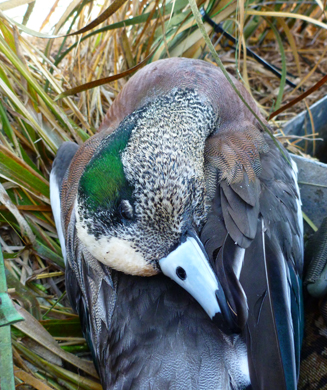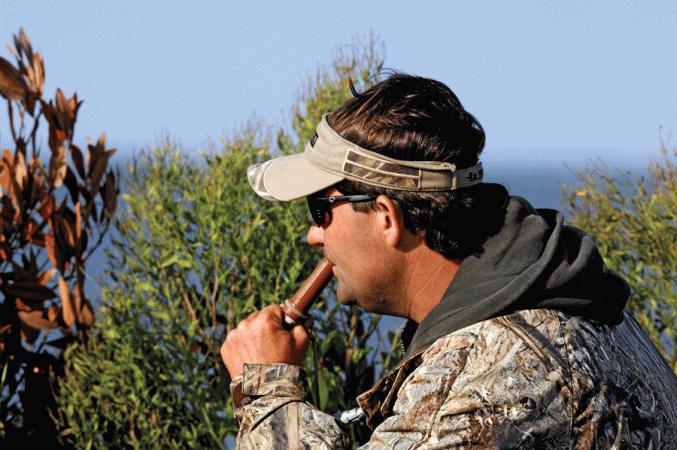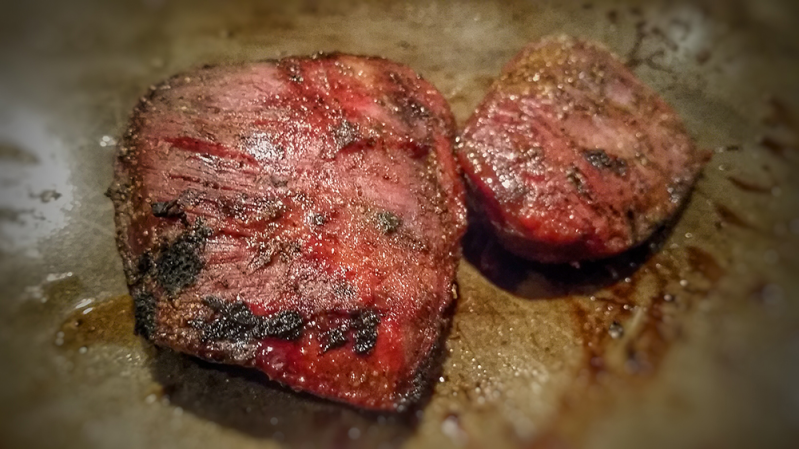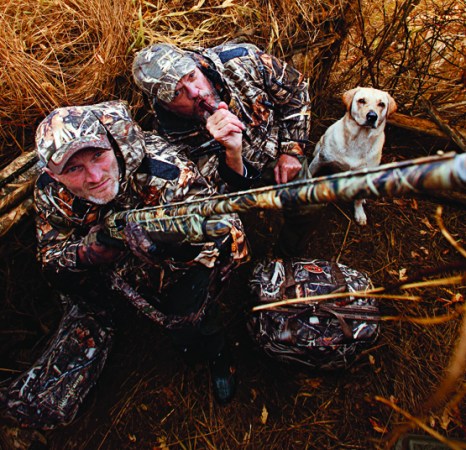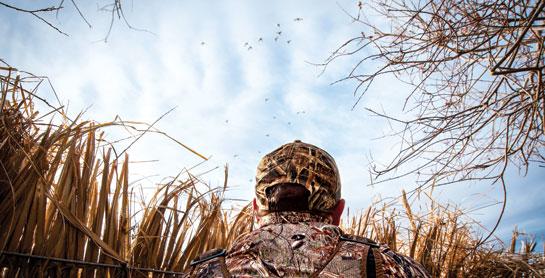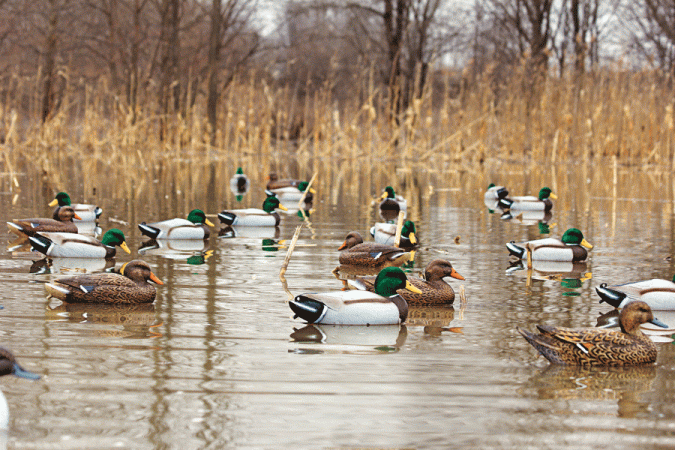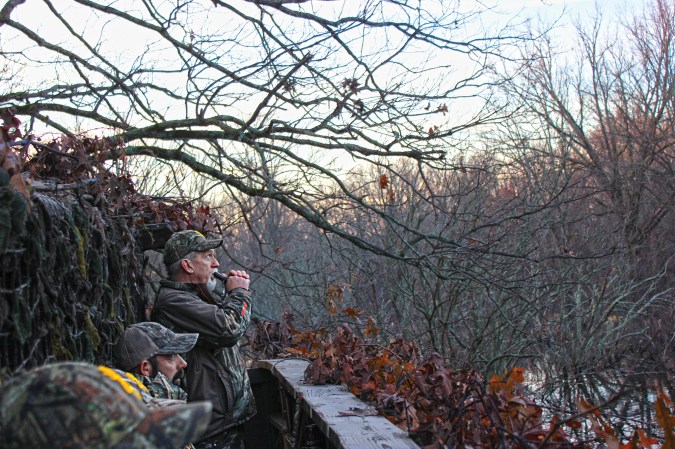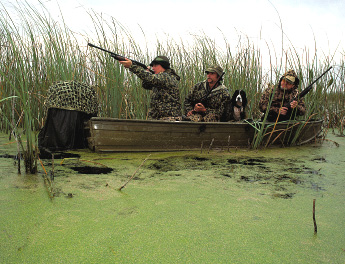It’s hard to imagine what could possibly go wrong with trying to call ducks and geese straight into your decoy spread. After all, how many times do they fly by with no reaction at all?
Then again, how many times have you called them right to you, let’s say in a crosswind, only to have them circle once, then twice, then leave? You might chalk that up to them seeing you, or to the decoys not being properly set up. And in some cases you might be right. But as much as “pulling them in on a string” has become waterfowling’s most cherished cliché for describing the ultimate decoying experience, fact is, it’s not always to your advantage to have a flock come straight in. Yes, you want birds to come to you, but only a downwind approach will yield that other over-used cliché we love to fantasize about: “wings cupped and feet out.”
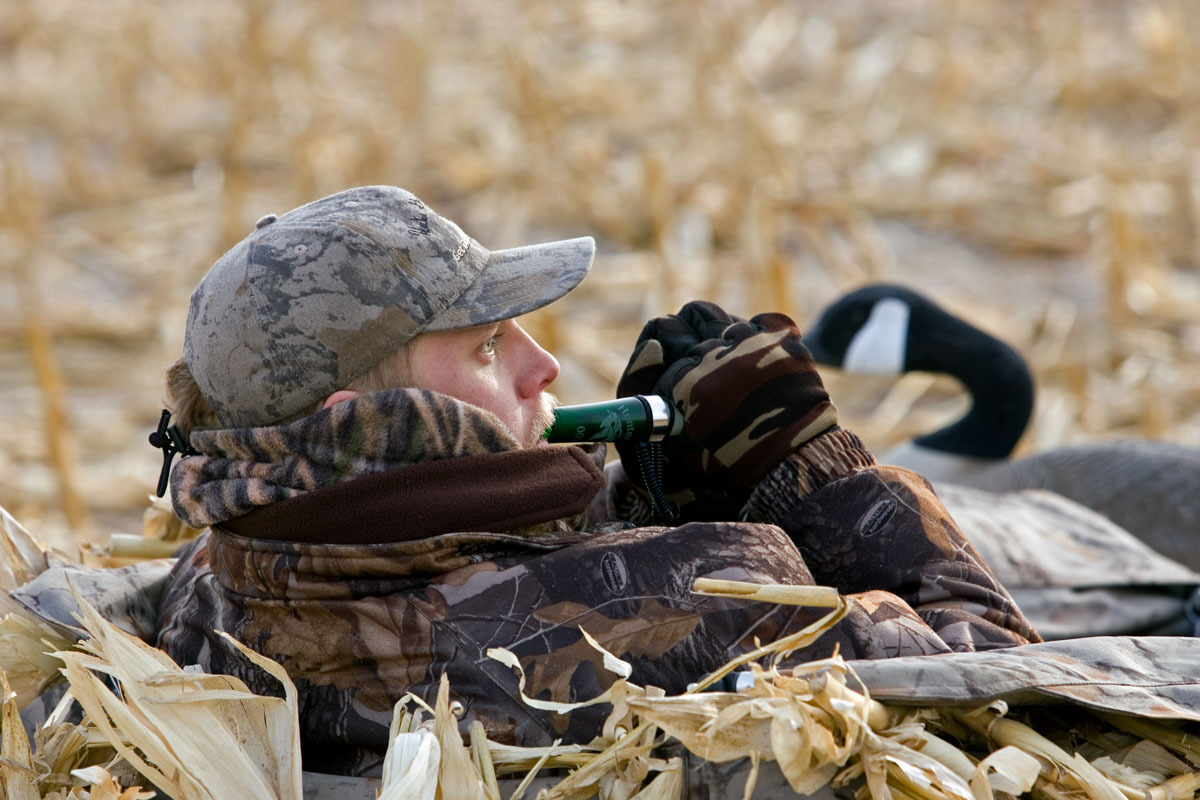
Given a choice, waterfowl (and all things that fly) prefer to land straight into the wind, and the stronger the wind, the more that preference turns into necessity. On the flipside, the more a flock circles your spread, the less likely it is to commit. So how do you reconcile these two realities, especially when calling to birds on a crosswind or upwind flocks? In waterfowling vernacular, the solution is called “letting the birds slide,” and it’s an easy concept once you realize that the shortest distance between the birds and your spread’s landing zone is oftentimes not a straight line. Here’s how to call ducks and geese by first letting them slide.
When to Call Ducks and Geese
Getting birds to slide entails easing off the call once you’ve grabbed their attention and they turn your way. Rather than come straight at you, you want them to drift downwind to the point where, when you start calling again and picking up the tempo, they’ll be approaching the decoys from directly downwind. You’re trying to prevent their natural tendency to circle your spread, which gives them time to pick out anything suspicious that might ultimately make them shy away. And the best way to do that is by making it as easy as possible for them to commit to landing on the first go, which will happen most often from a direct downwind approach.
It takes a certain degree of confidence to stop or slow down your calling to the point where a flock loses temporary interest enough to drift off course. There’s always that nagging doubt that you might not be able to get them back on track when you need to, that they’ll continue flying downwind or turn back in the direction they were originally heading. And you do have to pay close attention.
If upon laying off your call the birds look like they’re losing interest, you’ll have to call more excitedly to get them in line, then lay off again if they’re not far enough downwind. Each flock is different, and in a crosswind scenario, the farther out it is, the more likely you’ll need to manipulate them in stages: turning the birds toward you, then letting them drift downwind, then turning them again, then letting them drift, and so on. At some point their body language will confirm they’re committed (locked wings, back showing, or heads turned toward you), and that’s when to quit calling and let them navigate their way to the landing zone.
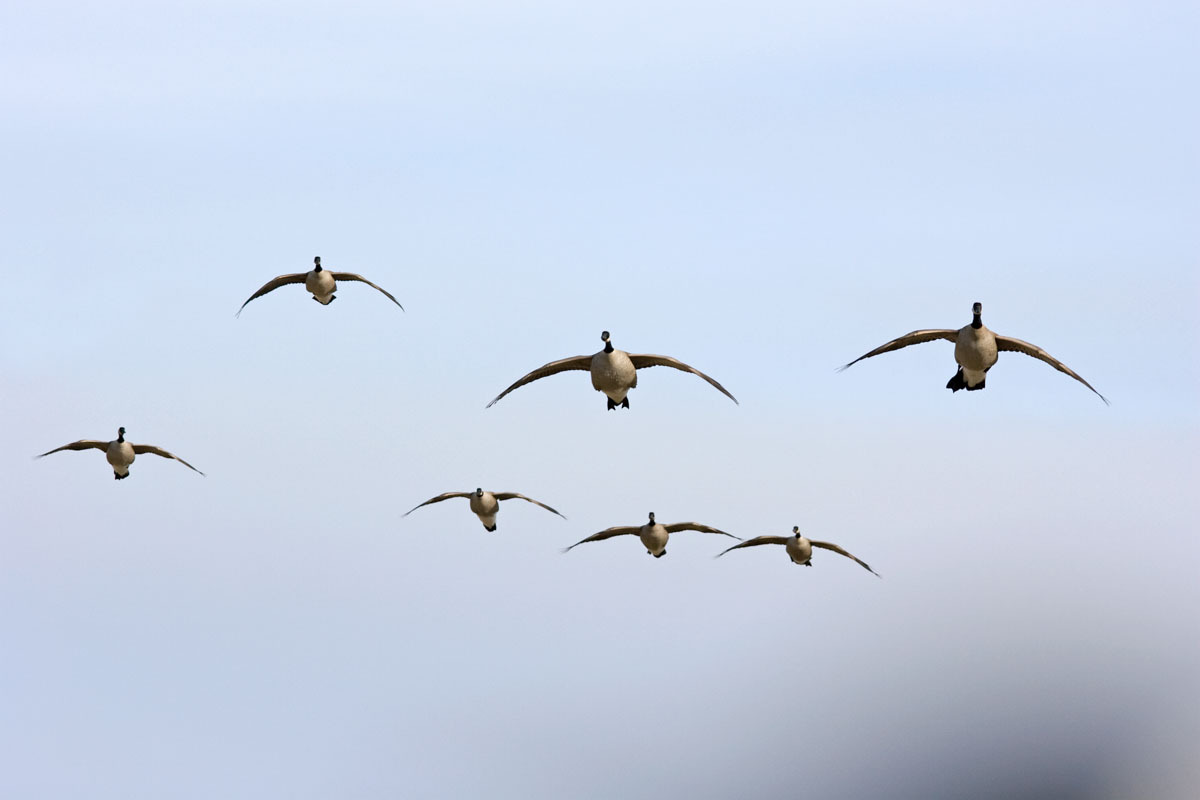
For geese you might use fast clucking or clucks and moans to turn a passing flock, then stop or switch to the occasional cluck to keep them interested but still drifting downwind, where at a certain point you’ll start picking up the tempo again to pique their excitement. Ducks might need a few quacks or feed calls to keep on their cross- and downwind path to get them positioned downwind of the landing zone, where a sharp greeting call will turn them toward you. In either case, the less calling that gets the job done, the better. The trick is knowing exactly when to hit them with more demanding calls to seal the deal.
Timing Is Everything When Calling Ducks and Geese
It does take a fair amount of in-field experience to judge exactly when to call to ducks and geese that are heading downwind, but here are a few key guidelines. First, interested ducks and geese tend to react almost immediately to excited calling, so make sure they’re close to straight downwind when you call. Call too early and they might end up on the outer edge of the decoys, having not swung sufficiently downwind before you called them back upwind. Call too late and you might have lost their interest for good.
Second, it will take a certain distance for waterfowl to be able to drop down and land in the decoys depending on how high they start off and how strong the wind. The higher they and the windier it is, the more distance they’ll need to lose altitude. That means you’ll have to let them swing farther downwind before calling them back. If they reach the downwind edge of your decoys and are still too high off the ground, they’ll either land upwind of your spread or swing around for another look, neither of which works to your advantage.
Third, even if there’s little perceivable wind, on a given morning you’ll find ducks and geese will want to approach the decoys from a certain direction. Once you’re able to establish that, you’ll know when to call so they’ll turn for their preferred approach. Finessing a flock into your decoys is all about making it as easy for them as possible. Also, if you’re field-hunting geese and the blinds are facing downwind, and you find the geese are favoring one side of the spread over the other, have the hunters on that side stop calling while the hunters on the other side pick up the tempo. Geese are very sound-oriented, and you can usually position them with calls so everyone gets a shot. If that doesn’t work, you’ll need to rearrange decoys to center a landing area they like.
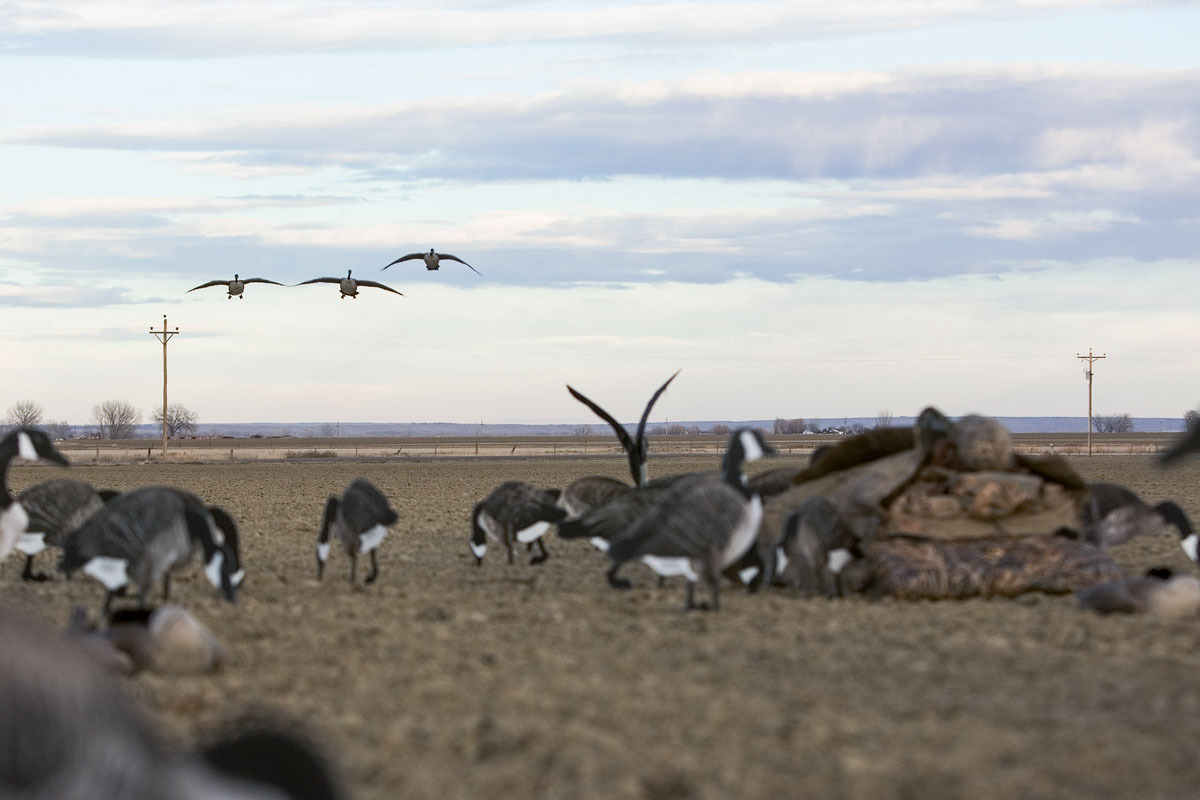
Once you figure out how to set up a flock’s final approach, reading birds relative to the wind will become second nature. And your ability to finish them will skyrocket. Knowing how to call ducks and geese is important, but knowing when to let them slide, and when to reel them in, is what puts them on the ground.
Goose and Duck Calls for Windy Days
Tim Grounds Pro Super Mag
Hunters looking for an excellent Canada goose call that can reach out on windy days, yet blow soft and goosey in close should check out Tim Grounds Pro Super Mag.
Zink Calls ATM Green Machine
For a duck call that can be blown hard and not stick, check out Zink Calls ATM Green Machine double-reed mallard call.
